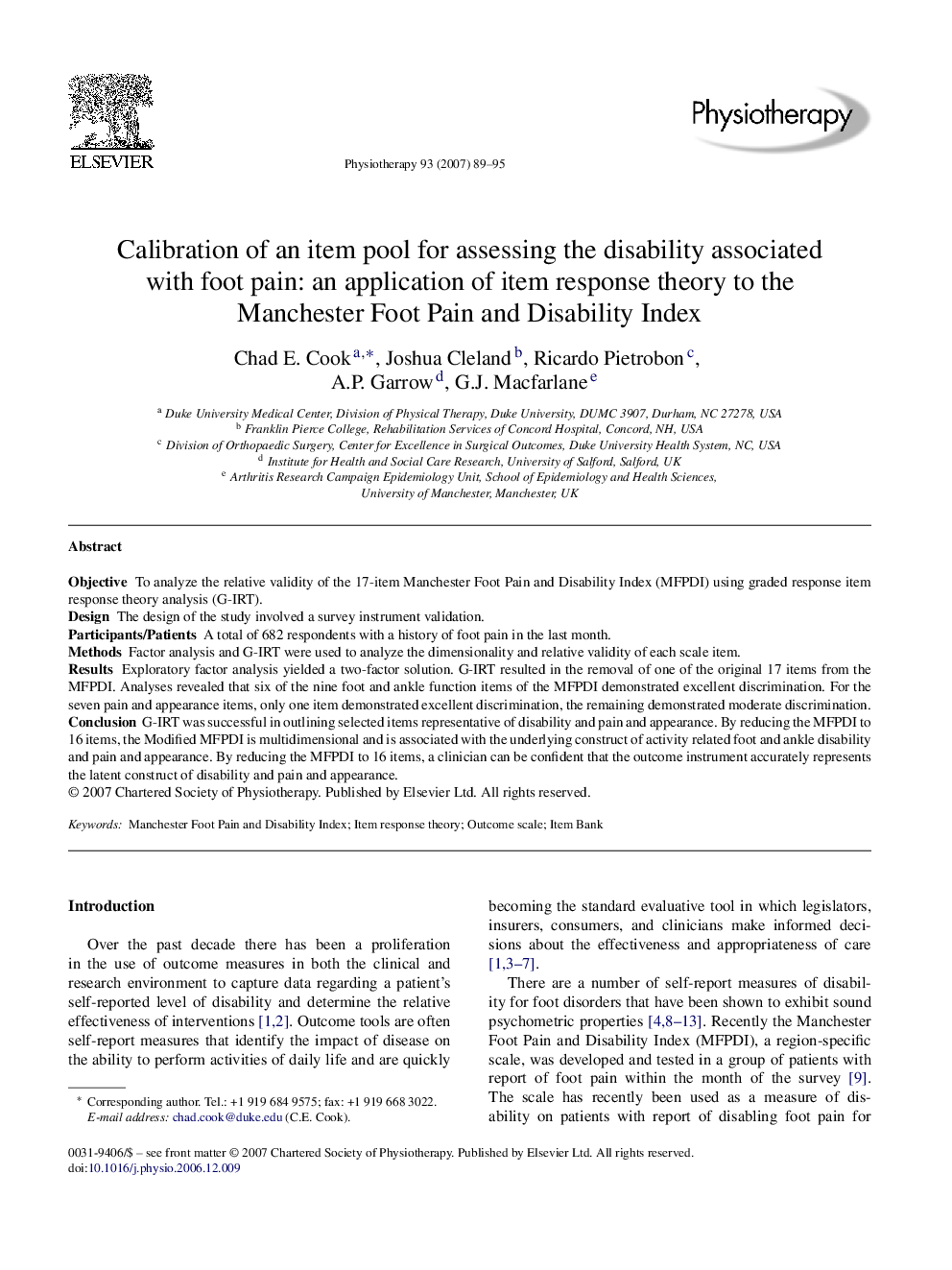| Article ID | Journal | Published Year | Pages | File Type |
|---|---|---|---|---|
| 2627760 | Physiotherapy | 2007 | 7 Pages |
ObjectiveTo analyze the relative validity of the 17-item Manchester Foot Pain and Disability Index (MFPDI) using graded response item response theory analysis (G-IRT).DesignThe design of the study involved a survey instrument validation.Participants/PatientsA total of 682 respondents with a history of foot pain in the last month.MethodsFactor analysis and G-IRT were used to analyze the dimensionality and relative validity of each scale item.ResultsExploratory factor analysis yielded a two-factor solution. G-IRT resulted in the removal of one of the original 17 items from the MFPDI. Analyses revealed that six of the nine foot and ankle function items of the MFPDI demonstrated excellent discrimination. For the seven pain and appearance items, only one item demonstrated excellent discrimination, the remaining demonstrated moderate discrimination.ConclusionG-IRT was successful in outlining selected items representative of disability and pain and appearance. By reducing the MFPDI to 16 items, the Modified MFPDI is multidimensional and is associated with the underlying construct of activity related foot and ankle disability and pain and appearance. By reducing the MFPDI to 16 items, a clinician can be confident that the outcome instrument accurately represents the latent construct of disability and pain and appearance.
